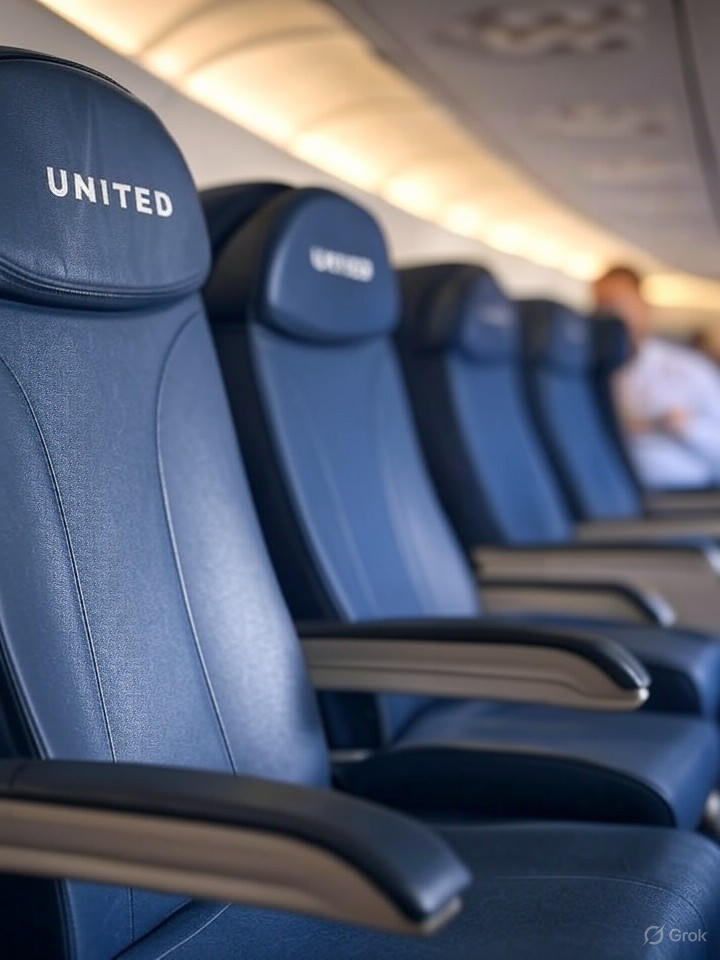In an era where air travel increasingly prioritizes premium experiences, United Airlines’ Economy Plus subscription has emerged as a compelling option for frequent flyers seeking to elevate their journeys without splurging on business class. Launched as a way to provide consistent access to enhanced seating, the subscription allows passengers to secure extra legroom seats on most flights for a fixed annual fee, ranging from $499 to $999 depending on elite status and travel patterns. This model, which United has refined over recent years, taps into the growing demand for comfort amid shrinking seat pitches in standard economy.
But what exactly does the subscription entail? Beyond the promised 3 to 6 inches of additional legroom, subscribers gain priority access to these seats at booking, often in the forward economy cabin, which can mean quicker deplaning and better proximity to overhead bins. Recent updates in 2025 have sweetened the deal, with some plans including complimentary alcoholic beverages on select routes and enhanced MileagePlus point accrual, according to airline announcements.
The Perks Beyond Legroom
A deep dive into user experiences reveals that the true value often lies in the intangibles. In a recent account published by Business Insider, a frequent traveler detailed how the subscription not only provided consistent legroom but also reduced travel stress through guaranteed upgrades, making it a worthwhile investment for those logging high mileage. This sentiment echoes across online forums and reviews, where subscribers praise the reliability for long-haul flights.
Industry analysts note that United’s strategy aligns with broader trends in airline revenue management. By offering tiered subscriptions, the carrier monetizes what was once a per-flight upgrade, potentially generating steady income streams. Data from aviation consultancies suggest that such programs have boosted United’s ancillary revenues by up to 15% in the past year, as passengers opt for predictability over gambling on last-minute availability.
Cost-Benefit Analysis for 2025
Evaluating the economics requires crunching numbers. For a traveler flying 20 domestic segments annually, the subscription could equate to about $25 per flight in value, factoring in typical $50 to $100 per-leg upgrade fees. However, as highlighted in a guide from One Mile at a Time, this calculus shifts for international routes, where Economy Plus might not justify the cost if premium economy options like United’s Premium Plus are available at similar price points.
Recent 2025 reviews, including one from Upgraded Points on a 737 MAX 9 flight, question whether the extra 4 inches warrant the premium, especially on shorter hops. Yet, for taller passengers or those with mobility needs, the added space proves transformative, as evidenced by posts on X where users rave about the comfort on transcontinental journeys.
User Sentiments and Drawbacks
Social media buzz on X in 2025 paints a mixed picture, with some flyers hailing the subscription as a “game-changer” for avoiding the dreaded middle seat, while others lament overcharges for family seating. One post described it as essential for 6-foot-tall travelers, citing better meals and priority boarding as underrated perks. Conversely, complaints about inconsistent availability during peak seasons underscore potential pitfalls.
Comparisons with competitors add nuance. Delta’s Comfort+ and American’s Main Cabin Extra offer similar legroom but lack United’s subscription model, which provides year-long assurance. A Forbes Advisor analysis from June 2025 posits that for elites or credit card holders, layering benefits like free checked bags amplifies the value, potentially saving hundreds annually.
Strategic Implications for Airlines
From an insider perspective, United’s push into subscriptions reflects a shift toward personalized travel ecosystems. With fuel costs stabilizing and demand rebounding post-pandemic, airlines are doubling down on upselling comfort. Insiders whisper that 2025 enhancements, such as integrated app notifications for seat swaps, could further boost adoption rates.
Ultimately, worthiness hinges on individual habits. For road warriors averaging multiple flights monthly, the subscription often pays dividends in comfort and convenience. Casual travelers might find per-flight upgrades sufficient, but as airfares climb, this model could redefine economy flying’s middle ground.




 WebProNews is an iEntry Publication
WebProNews is an iEntry Publication